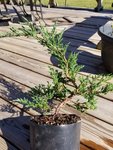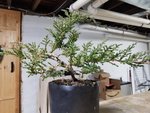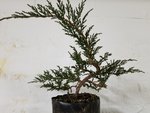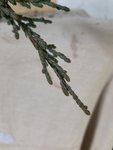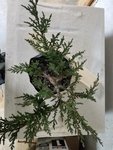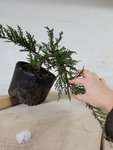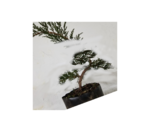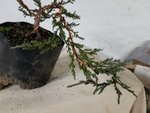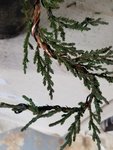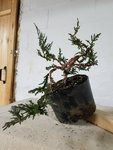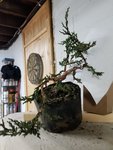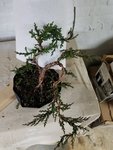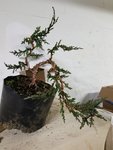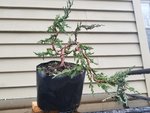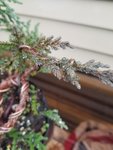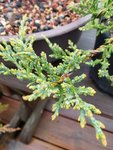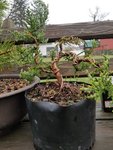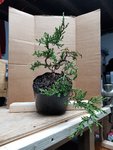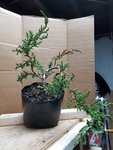After deciding my overall design concept, I starting my process of cleaning any unnecessary foliage on the main cascade branch. Knowing that I had strong foliage at the tip of the branch, I removed some of the foliage along the thicker portion which would help me wire the tree, while retaining the entirety of branches which I felt would be beneficial in the long-term design. I made sure that my choices alternated down the branch, so I would not have any bar branches - shoots that emanate from the same point on along a main branch.
For wire, I am using stripped THHN electrical wire. You can buy it for $10 for a roll of 50ft at Home depot. It is not as soft or easy to work with as wire sold specifically for bonsai, however since this is not going to be shown, and I am more interested in getting a basic design set for future development, I felt that it would work fine. For thicker wire along the trunk, I am using wire repurposed from 10-3 residential power wire. 10-3 has (4) #10 gauge solid copper wire as conductors. Since I had it in my basement from wiring my AC unit, I felt it would work fine for the heavier bending on this juniper.
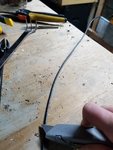
Stripping the wire from it's jacket is easy: a sharp utility knife, angled at about 45-30 degrees with little pressure applied will easily remove a long sliver of the jacket down the wire. The remainder comes off easy.
I pushed one end of the wire down into the pot along the base of the tree, wrapped my first turn around the trunk and continued up the main branch, careful to bend the wire without putting much pressure against the trunk and using mostly my hand and the leverage of the longer wire to get smooth bends. I followed this wire out to the end of the main branch.
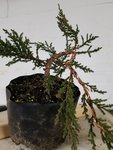
A second piece of wire, #12, was I used to wire the branch that split off the main branch to the main branch out to the end of the main branch. Wiring to two branches assures that you have a solid hold on the branches and you are less likely to snap or break a branch. Here you can see my wiring. It is not perfect but not TOO bad for someone with only about a year of experience. Ideally, some spots would have less of a gap between the wire and the tree.
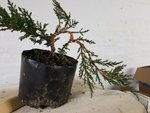
With the wire in place, I was able to bend the branch down towards the direction I wanted, and have it hold in place. To bend the branch, I grip the wire and bend the wire, not the branch, giving a slight twist in the direction which the wire is coiled.
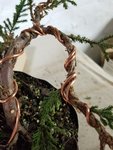
A close up of the wiring around the two branches. Notice how I follow the line of the thicker wire with the thinner wire. This keeps your wire organized, but it also helps add strength to spots where there are two runs of wire. If I wanted, I could bend this section even more than I did, because I know the wire would hold in place.
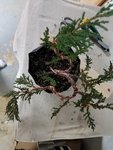
Using these techniques I also wired the other larger branch off the side.
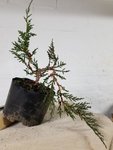
This allows me to move each branch into position and get a nice flowing movement to my tree and set each branch into the basic location before doing any finer wiring.

